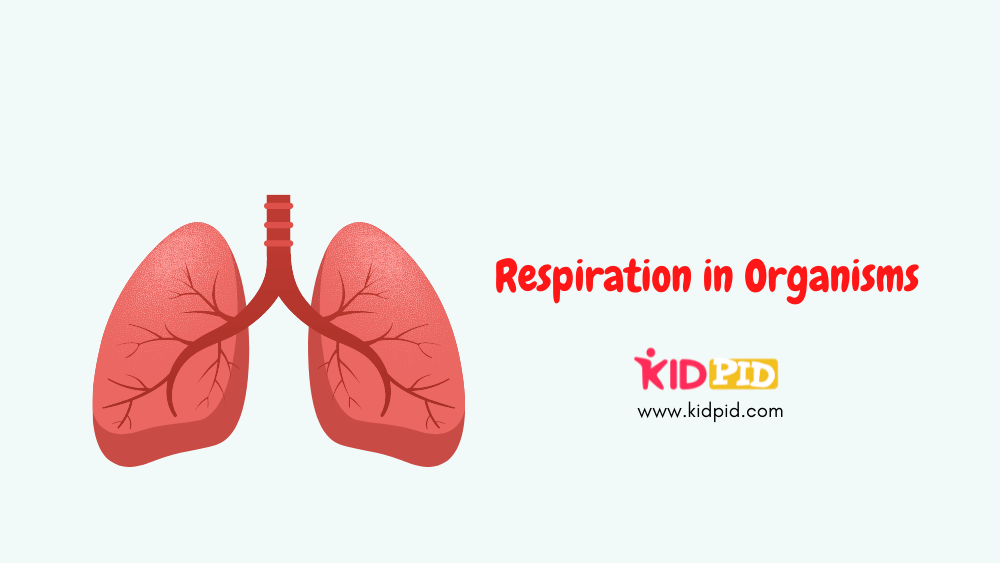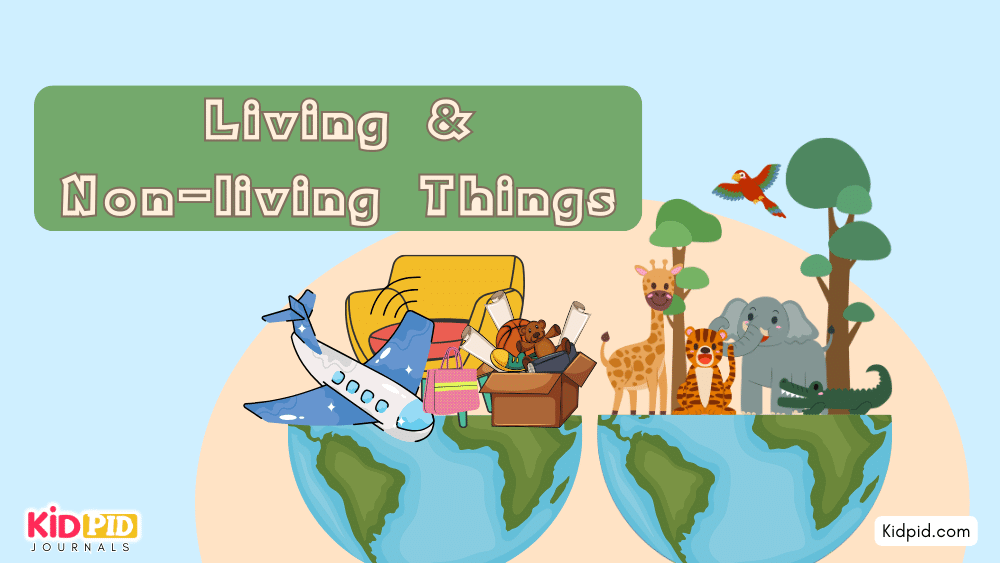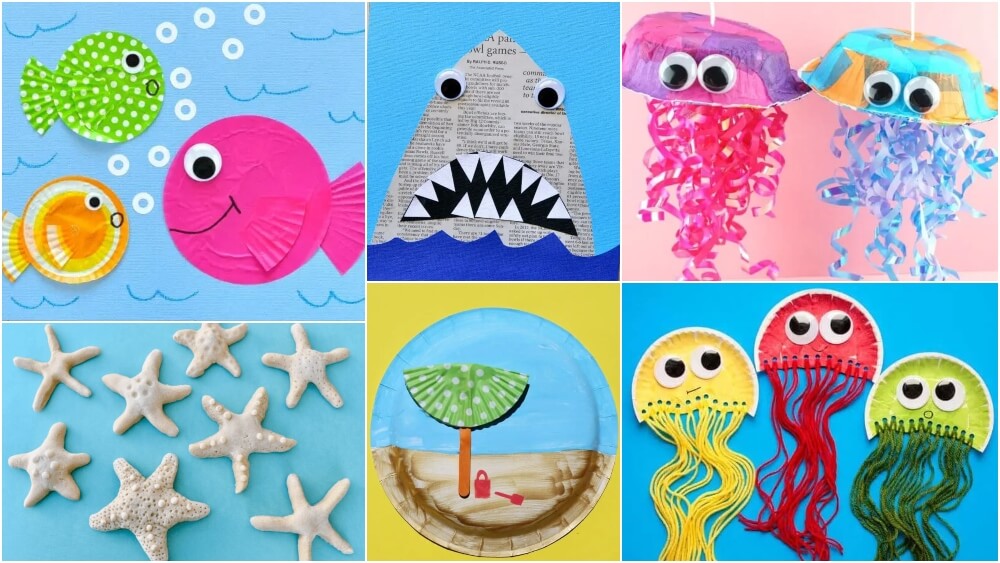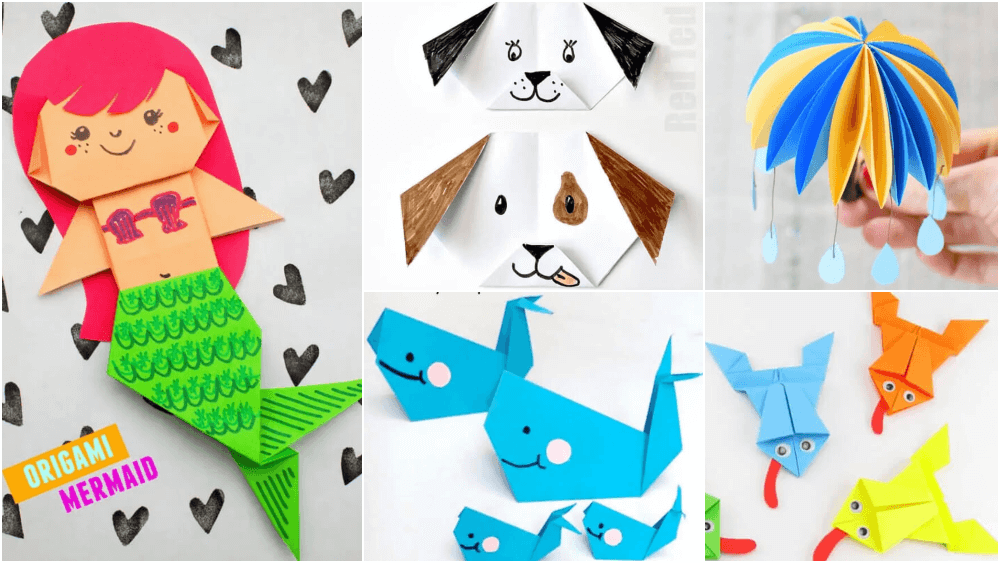Respiration in Organisms

Energy is needed by living as well as non-living things to do work. Without energy, they stop doing work. Our body needs the energy to carry on its activities.
We get this energy from the food that we eat. And the energy stored in the food is used by oxidation of the food materials. During oxidation oxygen combined with the food we eat, liberating energy and carbon dioxide.
“The process which helps to break down of the food in the body to release energy in the presence of oxygen is termed as respiration.”
Contents
Respiration
The process of taking in oxygen and giving out carbon dioxide between the organism and the environment is termed breathing.
When we breathe in we suck air into parts of our body called lungs. Lungs are full of tiny tubes of blood. The oxygen in the air goes through the tiny tubes into the blood and the blood carries it to all the other parts of the body.
The entire process of respiration involves two processes:
- Breathing or external respiration.
- Oxidation of food in the body i.e., internal respiration.
External respiration
This process consists of breathing in and breathing out of air. When air is inhaled, it reaches the respiratory surface where it is absorbed and carbon dioxide is expelled out of the body.
Internal respiration
This process involves the exchange of gases in the cells where oxygen is used and carbon dioxide is released along with water and energy.
Types Of Respiration
The respiration takes place in the presence of oxygen as well as in the absence of oxygen. Accordingly, respiration is of two types:
1. Aerobic respiration:
Aerobic means air. The respiration which uses oxygen is called aerobic respiration. In aerobic respiration, the food in the form of glucose is completely broken down into carbon dioxide and water by oxidation. Aerobic respiration produces a considerable amount of energy for the use of the organism.
2. Anaerobic respiration:
Anaerobic means without air. The respiration which takes place without oxygen is called anaerobic respiration. The microscopic organisms like yeast and some bacteria obtain energy by aerobic respiration. In anaerobic respiration, food is broken down into ethyl alcohol and carbon dioxide and release energy.
Respiratory System In Humans
In the human being, the main organ of respiration is the nose, throat, trachea, bronchioles and lungs. Lungs are the breathing organ in human beings.
Nose
The human being takes in air through nostrils or opening into the nose. In this, the air is cleaned of dust particles, bacteria and other foreign bodies. It is also warmed and moistened in this chamber.
Throat
The moist clean air moves into your throat. The air will come to a kind of fork in the throat. One path leads to the digestive system and the other path goes deeper into the respiratory system.
Trachea
The windpipe is also called the trachea. It is a sensitive muscular tube situated in the front of the neck. It is supported by half-rings of the cartilage which prevent it from collapsing. The trachea branches into smaller tubes called the bronchi. Each bronchus enters the lung of each side.
Breathing
When you inhale breathing starts. As you breathe, air passes down the throat and into the trachea, soon the air reaches into two tubes. Each of these tubes is called a bronchus. Each bronchus continues to branch into the smaller tube. The bronchi and their many smaller branches are often described as forming an upside-down tree. The thinnest branches of the respiratory tree lead to grape-like clusters of the tiny balloon called alveoli. The alveoli make up most of the tissue of the lungs the main organs of respiration. Each thin-walled alveolus is surrounded by a network of capillaries. Here blood picks up the cargo of oxygen from the air. Oxygen from the alveoli passes into the blood flowing capillaries.
Afterwards, the oxygen-rich blood will be pumped back to the heart and sent through the arteries to all the tissues of the body. Meanwhile, the waste gas carbon dioxide passes from the blood into the alveoli. Within seconds you breathe out the waste gas carbon dioxide.
Mechanism of Breathing
When you take a breath the muscles attached to your ribs contract and pull it upward and outward. At the bottom of your chest, another muscle called the diaphragm also contacts and pull down the bottom of your chest. Both of these actions make the chest expand. Suddenly there is more space in it. This cause a very interesting thing to happen. The air pressure in your lungs goes down. The pressure in your lungs instantly becomes lower than the pressure of the air around you.
This difference in pressure forces the air to rush into your lungs. So your chest must expand before you breathe in the reverse, when you breathe out or exhale your chest muscles relax. The space in your chest become smaller and the air pressure becomes greater inside than outside.






Responses